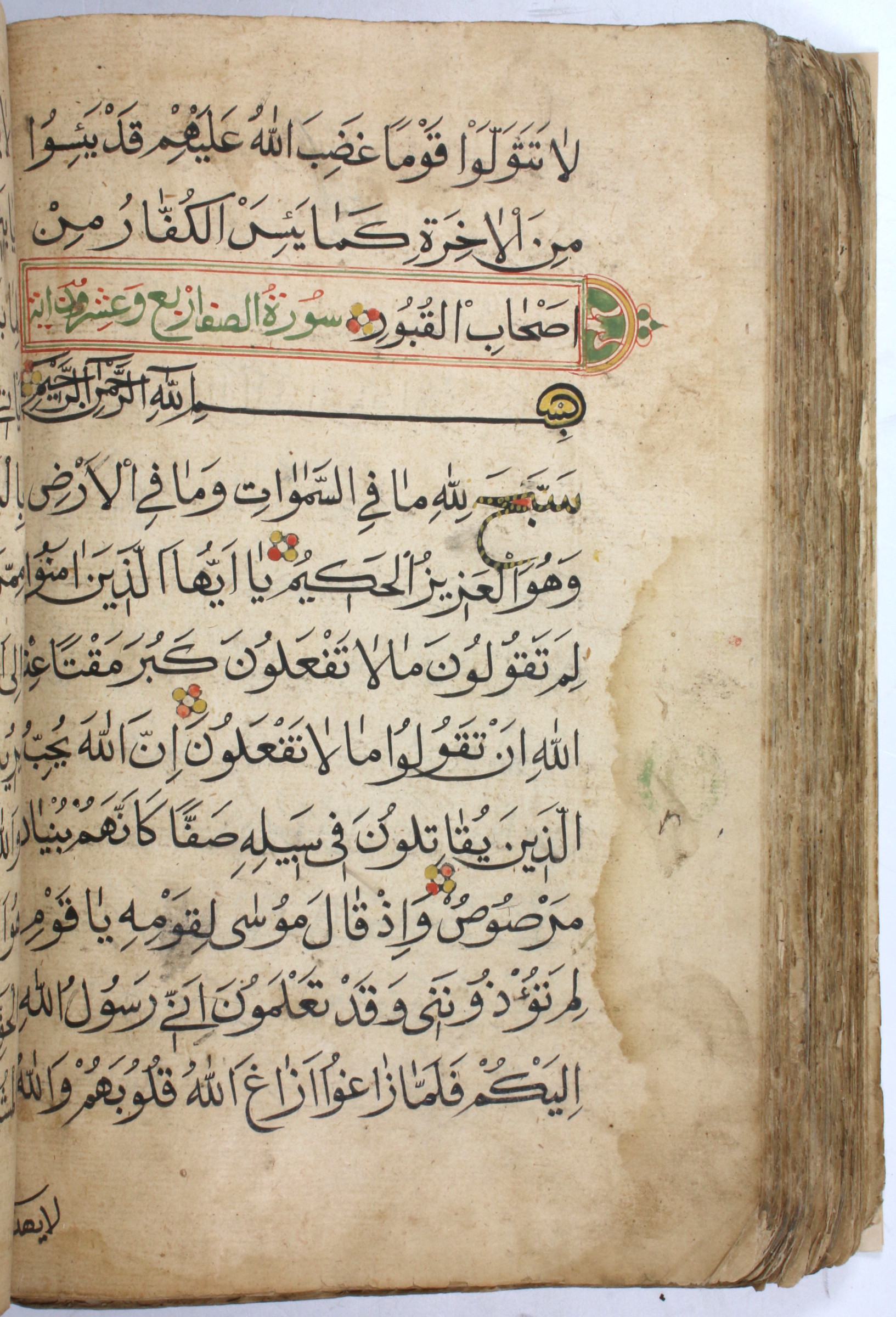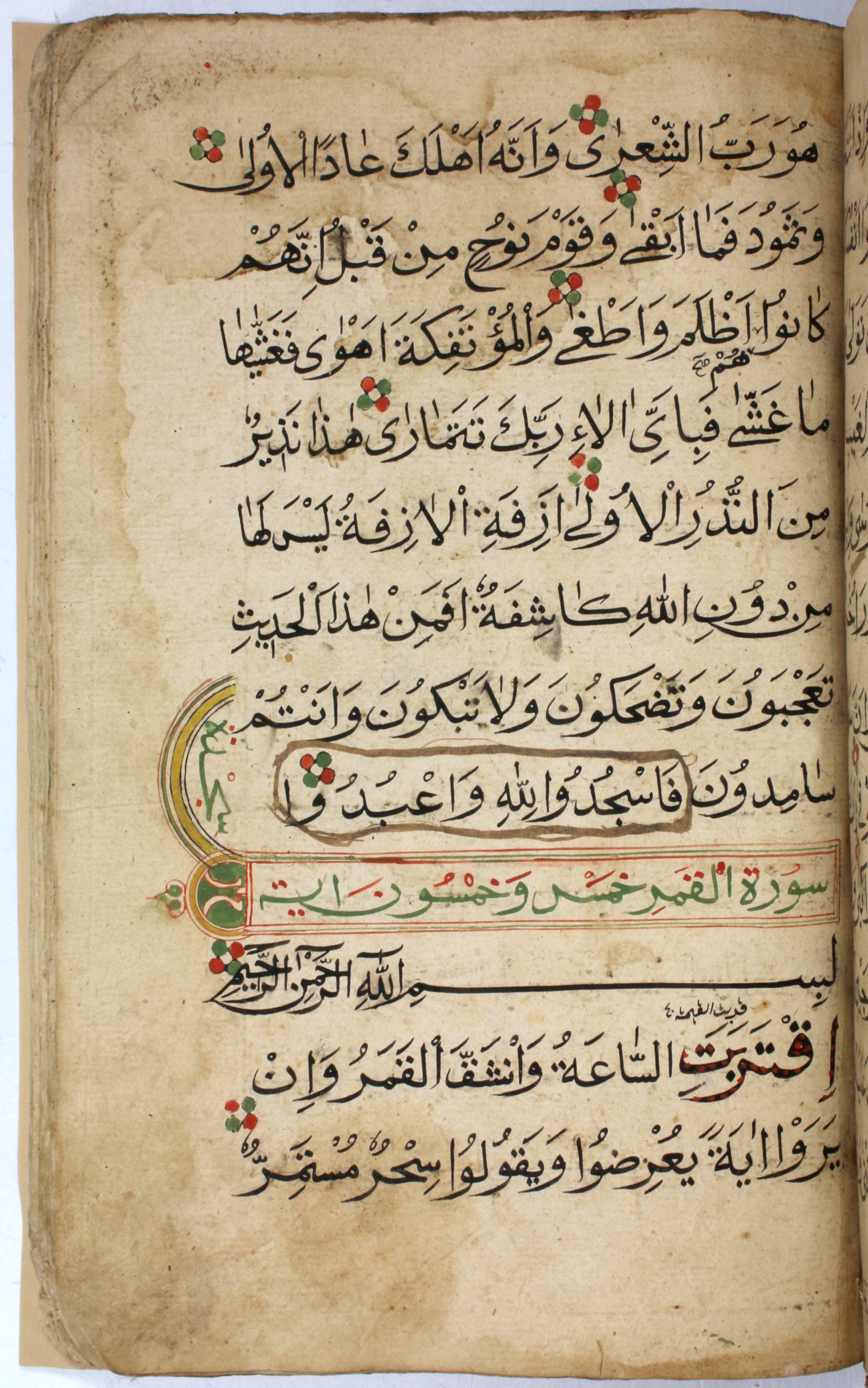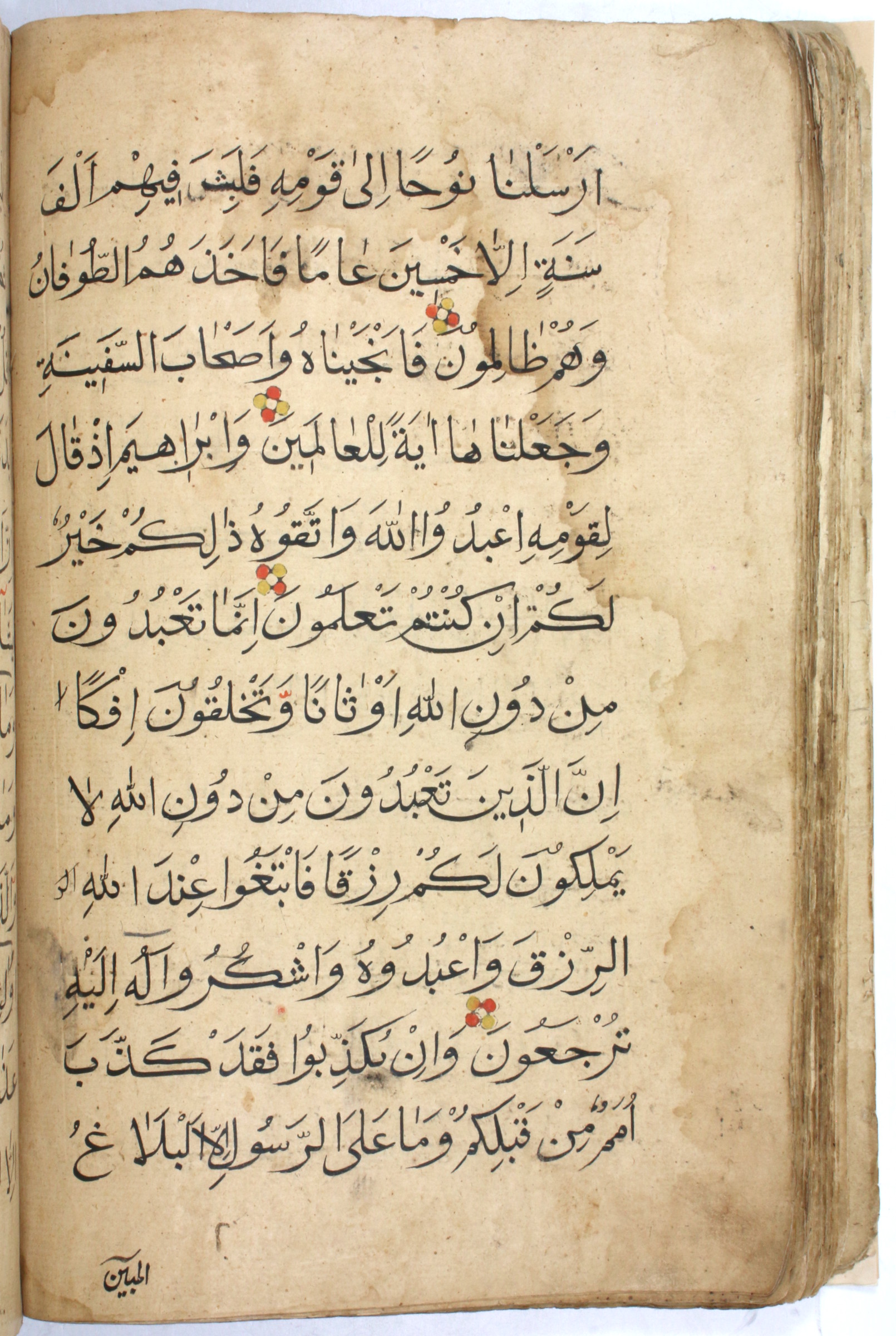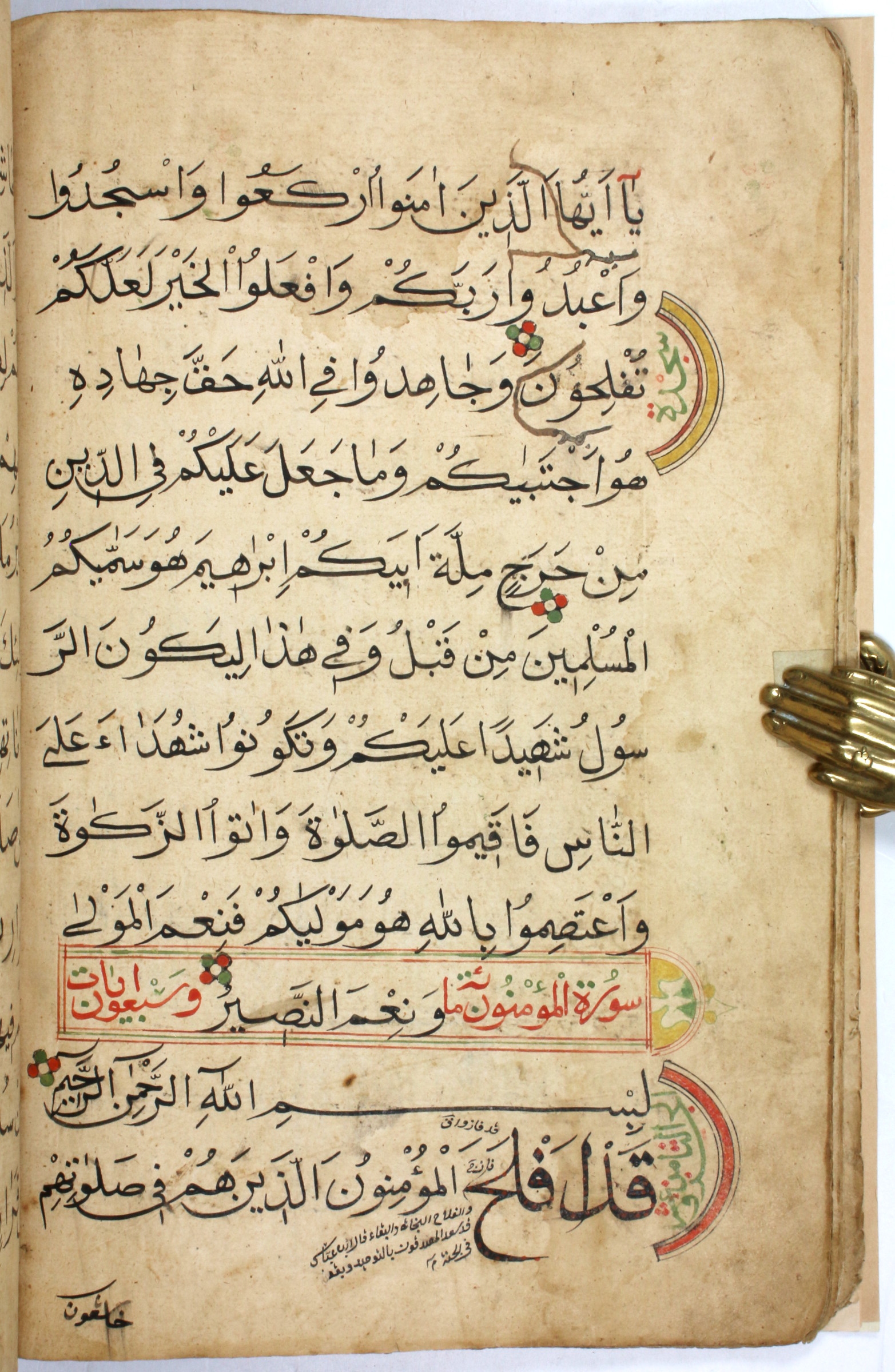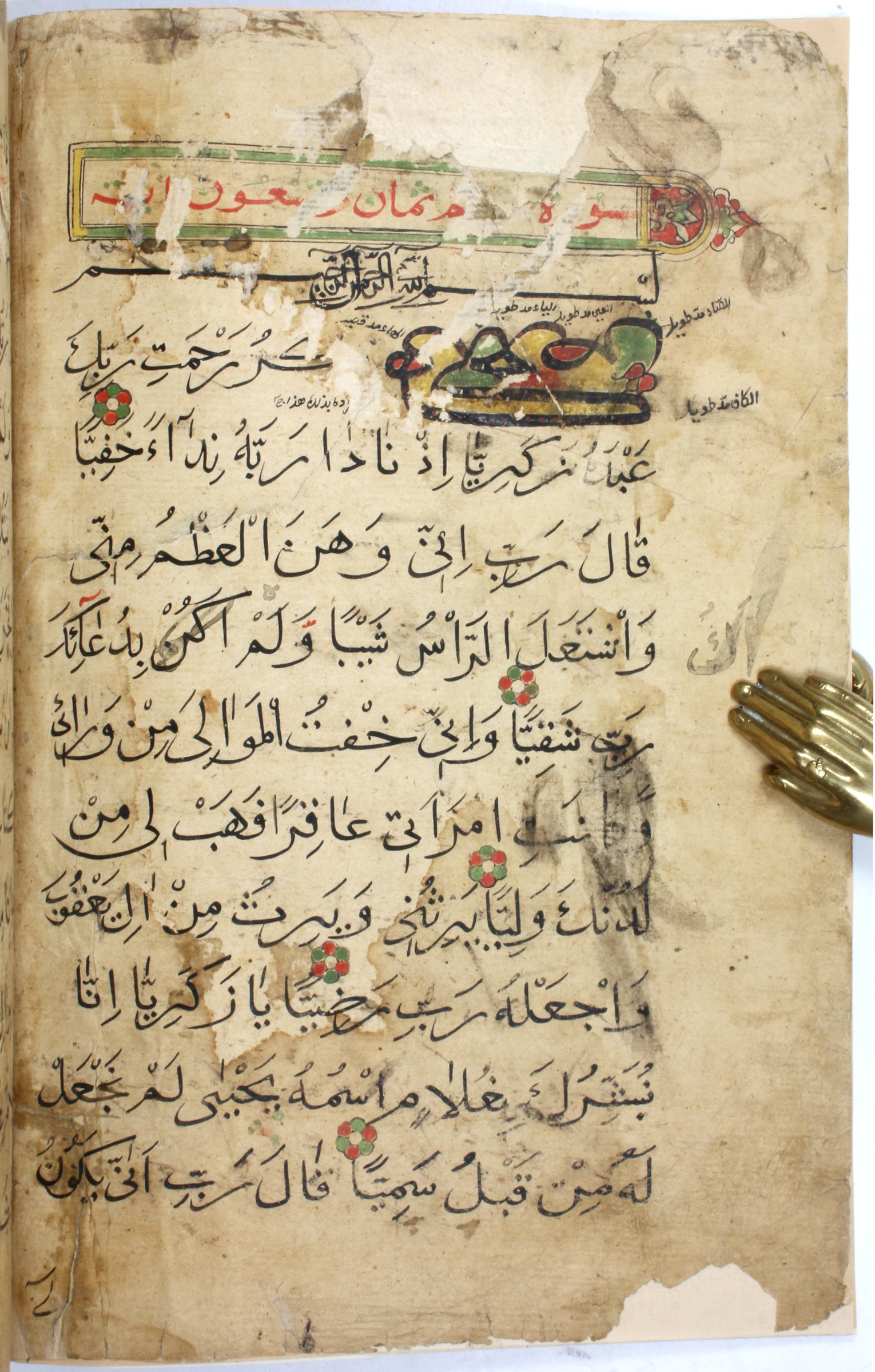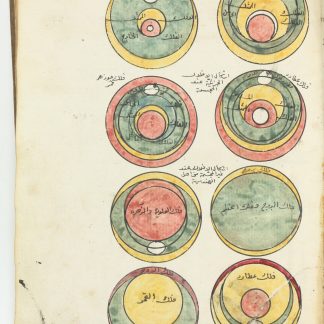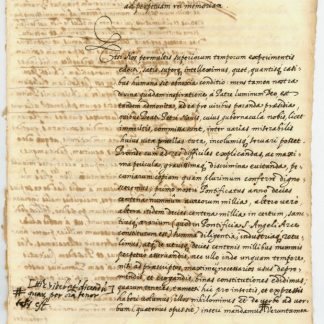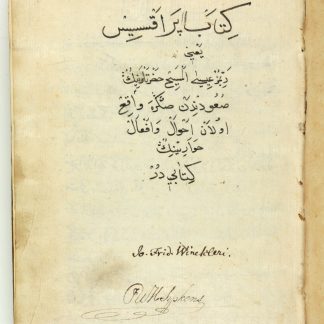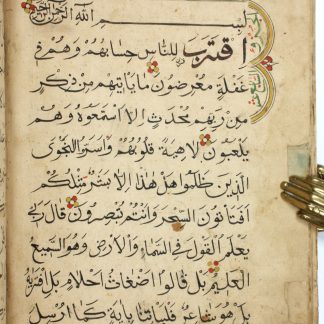"Scribal bravado" in a Caucasus Qur'an
[Qur'an - Surah 19-84].
Folio (240 x 335 mm). 239 ff. (wanting 2 ff.). Arabic manuscript on watermarked paper. Bold black script with surah markers, titles, ruled in red and green, important words and phrases in red, green, or yellow, or in black with red dots on top of each stroke. Watermark is a six-pointed star with text in the center and letters or numbers at four corners of the image. Modern marbled wrappers.
€ 7,500.00
Bright, bold, and distinctive, this Qur'an was likely created in the Caucasus, quite probably in Dagestan, where colour palettes dominated by greens, yellows, and reds dominate Muslim manuscripts to beautiful effect. The British Library, which holds a small ten-manuscript collection of Qur'ans from Dagestan, describes them as hailing from the "impressive but little-known manuscript tradition" of the Caucasus. While this example's exact point of origin is obscure, it certainly shares many similarities with Dagestan Qur'ans, including what the head curator of Southeast Asia at the British Library, Annabel Teh Gallop, calls "especially distinctive and rare feature of Daghistani manuscripts"; that is, "petalled floral verse markers are often stamped in black ink, and then hand-coloured".
What is certain is the artistic attention with which the scribe handled the holy text. Important words are picked out not only in red, but green, and with particularly large black-ink calligraphy, which is then decorated with a series of red dots on top of each stroke. Other phrases have the background of the text filled in with minty greens and warm yellows. In Daghistani calligraphy, "the Qur'anic text is generally written in a large, bold, confident and widely-spaced hand, tending towards the monumental. In Daghistani Qur'ans, the index of artistry is clearly the calibre of the calligraphy rather than the decoration, but perhaps the most unusual feature is the sense of scribal bravado or even swagger". The text itself comprises a substantial part of the second half of the Qur'an, beginning with Surah 19 (Maryam) and ending with Surah 84 (al-Inshiqaaq), with the caption of Surah 85 present.
From the private collection of R. G. Michel (1880-1963), and descendants.
Lacking approximately two leaves near the end of the manuscript; the text breaks off after Surah 79:17 and begins again with Surah 81:15. Thus, wanting the final 29 verses of Surah 79, Surah 80, and the first 14 verses of Surah 81.
Fore-edge waterstained, paper repairs, soiling, a few pencilled marks (on one leaf, a child's hand is learning the letters of the Arabic abjad in the margins).
Annabel Teh Gallop, "Daghistani Qur’an manuscripts in the British Library", in The British Library Asian and African Studies Blog (2019).


